
Steps and Checklists For Launching a Product: Product Marketing Managers Guide
Knowing how to launch a product successfully is no easy feat – it takes careful planning, execution, and coordination. But when done right, a product launch can significantly succeed your business.
So, how do you go about launching a product successfully?
In this article, we included the best tips and advice for product marketing managers (PMMs) on how to launch a product, along with various tips that can help your process go smoothly.
Try Userpilot Now
See Why 1,000+ Teams Choose Userpilot

How To Launch A Product: Keys Aspects
Here are the best takeaways to consider when launching a product.
What is the biggest bottleneck in your current product launch checklist?
Refine your product launch checklist to ensure nothing slips through the cracks.
How do you primarily announce new features to your users?
Which metric is missing from your post-launch analysis?
Master Your Product Launch Checklist
A successful launch doesn’t end on release day. Userpilot helps you coordinate perfect in-app launches with targeted flows, resource centers, and real-time adoption tracking.
See exactly how to optimize your product launch checklist with our platform.
1. Define your goals and objectives
Before planning your product launch, you must clearly understand what you’re trying to achieve. Defining your goals and objectives will help ensure that your launch is focused and on track.
Some common goals for product launches include:
- Increasing awareness of your product
- Generating interest and demand for your product
- Drive sign-ups or conversions
- Boosting customer retention
All of these goals can be great, as long as they are well defined.
2. Build a strong team
Launching a product is a team effort, so it’s essential to assemble a group of people who are passionate about your product and have the skills and experience needed to make the launch a success.

Your product marketing launch team should ideally include people from across the organization, including product managers, marketing professionals, customer success managers, and even salespeople.
3. Learn about your customer
You can’t launch a product successfully if you don’t understand your target customer.
Before you start planning your launch, take some time to learn about your customer base – who they are, what they need, and how your product can meet their needs.
One way to get to know your customers is to conduct customer research.
You can do this through surveys, interviews, focus groups, or casual customer conversations.
Using data from your research, you can create customer personas – detailed profiles of your ideal customers. These personas will help guide your product launch strategy and ensure that you’re targeting the right people with your marketing messages.
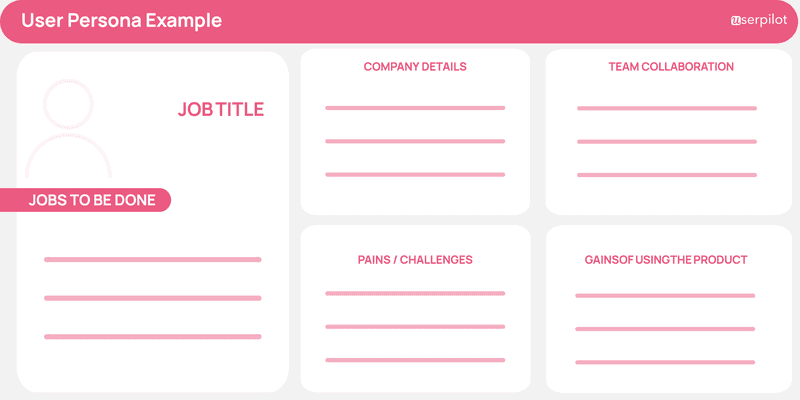
4. Write a positioning statement
A go-to-market strategy is essential for any product launch, but it’s especially critical if you’re launching a new product.
Your product positioning statement ties in with this strategy and should summarize your product, who it’s for, and what needs it satisfies.

Especially for SaaS companies that will offer a new solution to the market, the positioning statement must be clear and concise. It should be easy for customers to understand what your product does and how it can help them.
Also, focus on what differentiates your product in the market.
This will help you create marketing messages that stand out and resonate with your target customers.
All of this should be covered within the positioning statement and will help inform the rest of your product launch strategy.
5. Create the right promotional content
Once you’ve defined your goals, built your team, and done your customer research, another critical factor to consider is the type of content you’ll need for your product launch.
This includes everything from website copy to blog posts to email campaigns and social media posts.
When creating this content, it’s essential to keep your target customer in mind.
What kind of messaging will resonate with them? What kind of content will they be interested in? How can you position your product in a way that will meet their needs?
Let’s consider a concrete example.
Imagine you have created a tool that helps with building CVs.
You could position this product as a way to help job seekers build better CVs, but that’s not the only way.
You could also position it as a way to help busy professionals save time by automating the CV-building process.
These are different ways to position the same product, and each unique selling proposition will appeal to a type of customer. Choosing the right angle for your target market when considering the content you’re creating is essential.
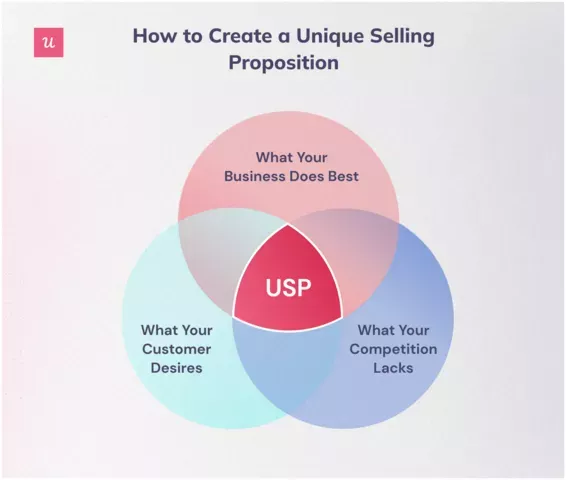
Your promotional content should always be engineered with your target customer in mind.
6. Prepare your team
A product launch is a team effort, so it’s essential to ensure everyone on your team is prepared for the big day. This includes ensuring they understand the product, the launch goals, and their role in the process.
It’s also essential to have a clear plan for how you communicate with your team throughout the launch process.
What kind of updates will you be sending? How often? Who will be responsible for what tasks?
Answering these questions ahead of time will help ensure that everyone is on the same page and knows what they need to do to contribute to a successful launch.
7. Look back and learn
After launch, one key metric you’ll want to track is customer engagement. Are people using your product? How often? What features are they using the most?
This data will be vital in understanding whether or not your product launch was successful.
If people are using your product and finding it valuable, that’s a good sign that you took the right actions and moved in the correct direction.
Collect feedback to understand what makes them happy and act on it to improve and close the feedback loop.
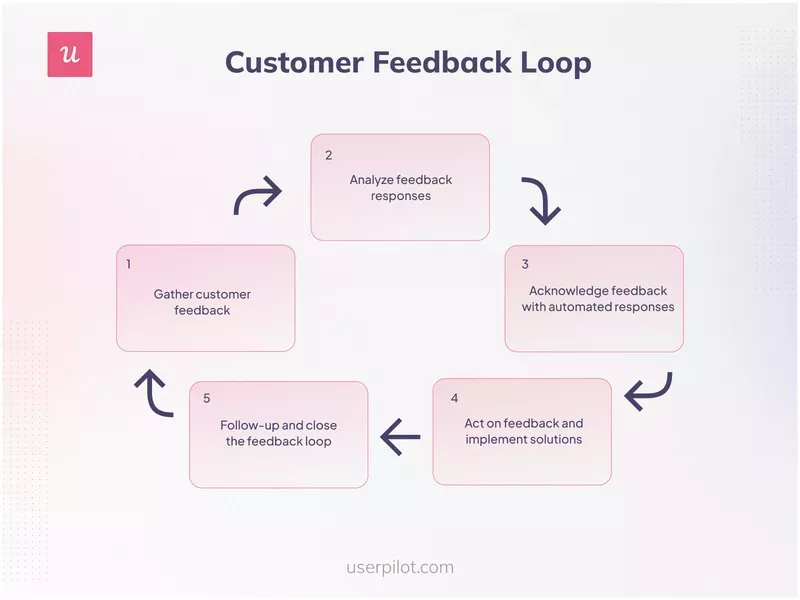
If people are not using your product, or if they’re only using it sporadically, that’s a sign that something went wrong, and you’ll need to adjust your strategy accordingly at that point and in the future.
Customer engagement data is just one metric you’ll want to track post-launch. Others include website traffic, conversion rates, customer churn, and Net Promoter Score (NPS).
All these metrics will better understand how well your product is performing and what areas need improvement.
How to launch a product using a launch plan and checklist
Whether it’s a SaaS product launch or the launch of a new feature within a product, success takes careful planning and execution.
A launch plan and checklist can help you keep track of all the moving parts and ensure nothing falls through the cracks.
Here’s what to include in your product launch plan:
- A timeline of all the tasks that need to be completed, including when they need to be completed and who is responsible for each task.
- A list of all the promotional materials you’ll need, including blog posts, social media posts, emails, etc.
- A budget for any paid advertising or other marketing initiatives you’ll be undertaking as part of your launch.
- Any deadlines or milestones that need to be met during the launch process.
Your product launch checklist should include everything that must be done on launch day and any last-minute tasks that must be completed leading up to the launch.
Some actions to include on your checklist might include:
- Creating any social media posts or ads that will be going live on launch day.
- Sending out any launch emails or other communications to customers, partners, and investors.
- Updating your website with any new product information or pricing changes.
- Making sure all customer support materials are up to date and easily accessible.
- Training your customer success team on the new product so they can provide support.
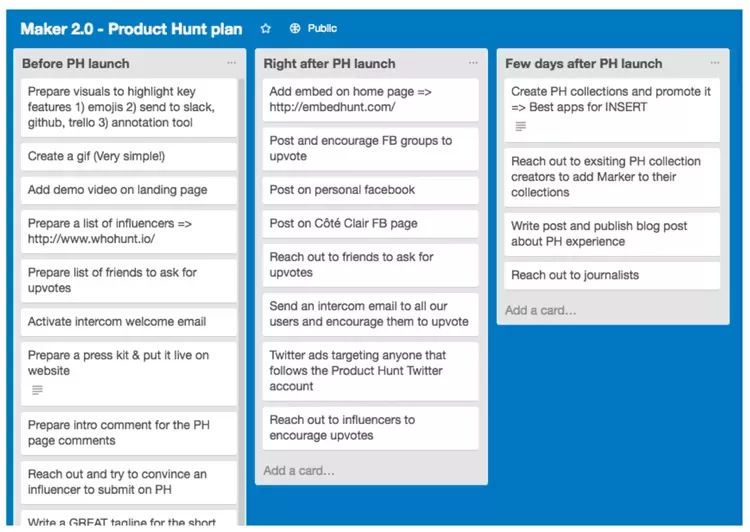
A product launch plan and any additional checklists are valuable tools because they help you keep track of all the moving parts of a launch and ensure nothing falls through the cracks.
They also ensure that everyone on your team knows what they need to do and when they need to do it. This can help reduce stress and avoid last-minute scrambling on launch day.
What is (and isn’t) product marketing when launching a product?
Product marketing is the process of bringing a product to market, which includes activities such as market research, product development, branding, advertising, and pricing.
Product marketing is distinct from other types of marketing in that it focuses on a specific product or group of products rather than on a known brand or company.
A crucial part of product marketing is understanding the needs and wants of customers and then creating a unique selling proposition (USP) for your product that meets those needs.
Once you have your USP, you’ll need to develop a go-to-market strategy to help you reach your target market and promote your product effectively.
Differences between product marketing vs product management in a great product launch
Launching a product successfully takes careful planning and execution from the product marketing and product management teams.
Product marketing is responsible for market research, product development, branding, advertising, and pricing.
On the other hand, product management is responsible for developing the product roadmap, managing the product lifecycle, and working with engineering to bring the product to market.
Both teams need to work closely together to ensure a successful launch.
The main difference between product marketing and product management is that product marketing focuses on bringing the product to market, while product management focuses on developing the product itself.
When scaling a portfolio, the product manager role becomes even more crucial to the product ops.
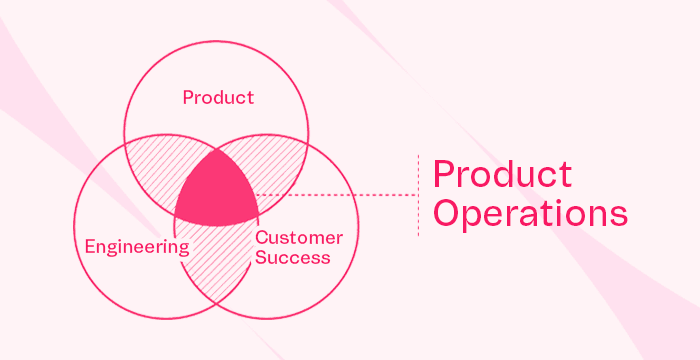
Product launch checklist
Let’s now consider the various aspects of a product launch that need to be planned for. These elements work together to create the best launch possible.
1. Market Research
Before launching a product, you must understand your target market, along with their needs and wants. This can be done through market research, which can be conducted through surveys, interviews, focus groups, or secondary research.
The proper market research will help you develop a USP (unique service proposition) for your product and create a go-to-market strategy to reach your target market effectively.
2. Product Development
After you’ve done your market research and developed your USP, it’s time to start creating your product.
This is where the product management team comes in.
Product managers are responsible for developing the product roadmap, which outlines all the features and functionality that must be included in the product.
They also work with engineering teams to ensure that the product is built according to specifications and meets all quality standards.
3. Branding
Your product launch plan should also include a branding strategy. This is because your brand will be one of the most critical factors in determining whether or not customers choose to buy your product.
Your branding strategy should include elements such as your logo, tagline, and overall design aesthetic. It’s also important to consider how you want to position your brand in the market.
Product marketing should work with product design to establish this.
4. Advertising
Advertising is another important aspect of launching a product successfully. You’ll need to create advertising campaigns that effectively target your target market and promotes your USP.
You can use multiple channels for advertising your product, including outdoor, activation events/conferences, Product Hunt, online paid search, and social media. It’s essential to choose the channels that will reach your target market most effectively.
5. Pricing
You’ll need to come up with a pricing strategy for your product. This is one of the most important decisions you’ll make, as it will determine how much revenue you generate from your product.
You can choose from many different pricing models, so you must consider all your options and select the one that will maximize your profits.
6. Go-to-market
After all the planning and preparation, it’s time to execute your go-to-market strategy. This is when you launch your product on the market.
Some common go-to-market strategies include an announcement on a specific landing page on your site, launching a press release, in-app and email announcements, webinars, and trade shows.
7. Sales and support
Once your product is launched, you’ll need to ensure you have the right sales and support infrastructure to ensure that customers can buy and use your product successfully.
This includes creating a website, creating customer service and technical support materials, and training your sales team to provide the best help possible.
Tip: go directly with an in-app self-service resource center to save time and money and offer automated on-demand support.
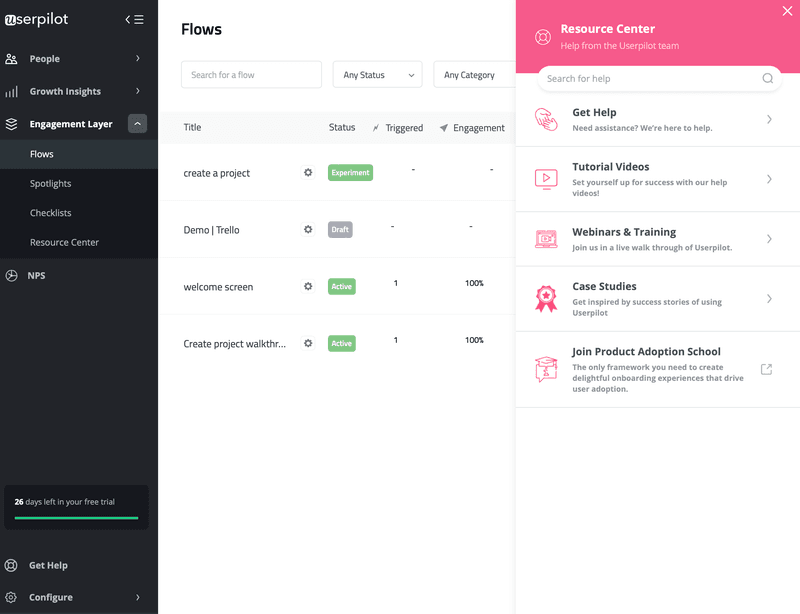
8. Feedback
Finally, getting customer feedback after you launch your product is essential. This feedback can improve the product and ensure that it effectively meets customer needs and wants.
Customer feedback can be gathered through surveys, interviews, focus groups, and online reviews.
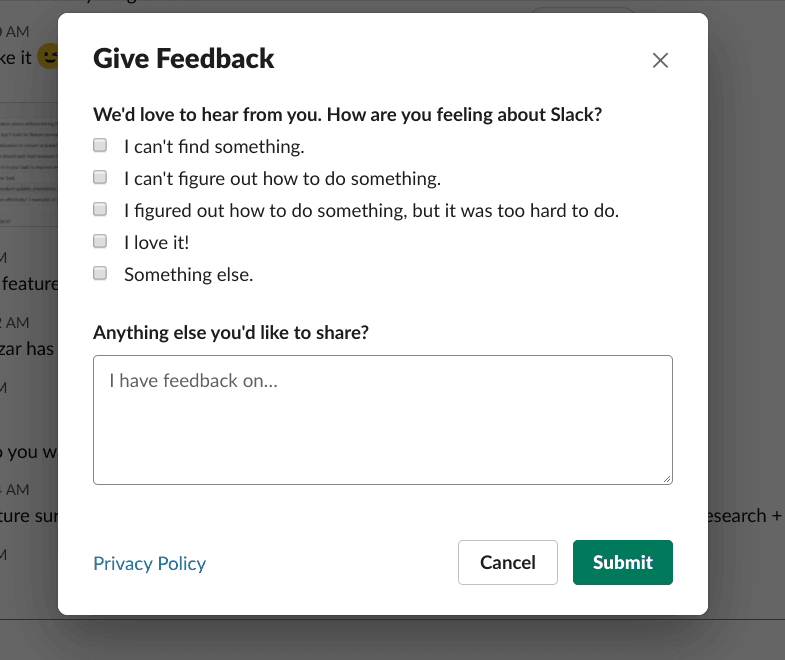
How to develop and deepen your product launch skills
Let’s finally consider how you can develop and deepen your product launch skills so each launch is better than the previous one.
1. Learn from experts
There are many books, articles, and online courses on product marketing. Find some that you like and learn as much as you can from both the mistakes and the successes of others.
2. Join a professional organization
There are many professional organizations for product managers and marketers that can provide guidance when launching products.
Joining one of these organizations can help you network with other professionals and stay up-to-date on industry news and trends.
3. Improve your analytical thinking
Understanding and interpreting your product launch metrics is crucial for any product manager or marketer.
Brush up on your data analysis skills to effectively interpret your product’s performance.
4. Stay up-to-date on industry news and trends
Product management and marketing are constantly evolving, so staying current on the latest news and trends is essential.
5. Automate where possible
Whether through email workflow automation or marketing automation, there are many ways to automate product launch tasks. This can free up your time to focus on more business-critical actions.
6. Be patient
Product launches take time and effort, so it’s essential to be patient and not get discouraged if things don’t go as planned.
Remember that even the most successful products have had their share of bumps in the road – and then recovered. This means that you can also do the same if things don’t go according to the plan from the get-go.
Conclusion
Launching a product is a complex process that requires careful planning and execution. As a product manager or marketer, it’s your job to ensure that the product launch goes smoothly and that customers are satisfied with it.
The key aspects of a successful product launch include:
- Market Research
- Product Development
- Branding
- Advertising
- Pricing
- Go-to-market
- Sales and support
- Feedback
By following these steps, you can launch your product successfully. Additionally, you can improve your product launch skills over time by learning from experts, staying up-to-date on industry news and trends, and automating where possible.
If you want to deliver the best experience to your users, not just at product launch, but also when using your app, check out Userpilot to learn what it can do for your business.
Author Bio
Hanson Cheng is the founder of Freedom to Ascend. He empowers online entrepreneurs and business owners to 10x their business and become financially independent. You can connect with him here.







